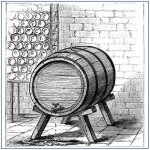Video Game Trademarks
There are five levels of distinctiveness that gives trademarks their strength. Trademarks are meant to identify the source of goods and they have to be distinctive. The two strongest of the five are arbitrary and fanciful trademarks. Arbitrary marks are when you use a term that has nothing to do with the product itself. A good example of this is Apple, Apple is a very strong trademark, because there is a distinctive disconnect between the items being sold under that name, and the name itself.
Video Game Law 101 with Zachary Strebeck
Zachary Strebeck is a California game lawyer who represents clients in the video game, tabletop game, and mobile app industries. In addition to his solo law practice, Zachary serves as Of Counsel to The McArthur Law Firm, where he counsels clients in business formation and fundraising issues, game development contracts, and the protection and enforcement of intellectual property.In this CLE class video Zachary Strebeck discusses Video Game Trademarks.
You can watch the complete Video Game Law CLE class here:
Video Game Law CLE
Fanciful marks are words that are invented solely for their use as trademarks. Exxon, or Xerox are good examples of fanciful marks. The next level of marks, is called suggestive. Examples of suggested marks are Microsoft, or Blue-Ray. These names require some sort of jump in logic between the mark and the actual product, and are solid trademarks.
Descriptive marks are not inherently distinctive and require a bit more in order to be registered. For example Windows, in this case you will need some sort of documentation to prove your customers identify this trademark with your goods specifically. This can be done through surveys, though without the secondary meaning proven, you won’t be able to register that trademark.
Generic marks are the worst. Names like email, or multi-state bar exam, are unprotectable. A good example of genericide is with Google. The term googling something doesn’t necessarily mean typing in a search at Google, it means just doing an online search for something. Google fights this constantly, so they don’t lose any rights they may have had. This case highlights the need to police your brand and make sure that it remains distinctive.
Part of the process of determining your tradename needs to be a trademark search to make sure the names you’ve chosen don’t conflict with anything that is already registered in your market; this can be done at the USPTO trademark database.








